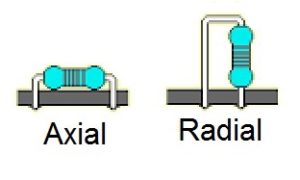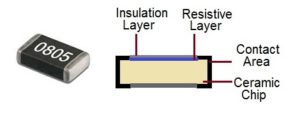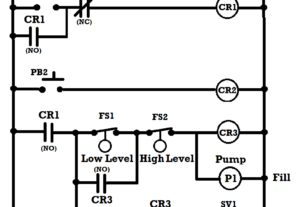Symbols with engineered values are one thing but Physical Resistor creation is another. Technology is where the creation of actual resistors comes into play. The opposition to current flow presented by a material is dependent on its conductivity, cross-sectional area, and applied voltage. Wire made from various metals, carbon composition, carbon film or metal film are all used to control current. Resistors are made with values ranging from milliOhms to MegOhms. The Tolerance ratings range from .1% to 20%. Most Fixed resistors are classified into the following groups:
Wire-wound Resistor – Metallic, ceramic, or porcelain bodies
Carbon Composition Resistor – Made of carbon dust or graphite paste
Film or Cermet Resistor – Made from conductive metal oxide paste
Semiconductor Resistor – surface-mount thin film technology
Wire Wound Resistors (Power Resistors)

Carbon Composition Resistor

 Carbon Film Generates less noise than carbon composition, Low tolerance, Low cost, and Wide operating range
Carbon Film Generates less noise than carbon composition, Low tolerance, Low cost, and Wide operating range


Metal Film Resistors operate better at higher frequencies than carbon film. They are usually 1% precision and more temperature stable than carbon film type
The above pictures show through hole Axial resistors. The term axial refers to components that lay flat as opposed to Radial components that stand up as shown below:












